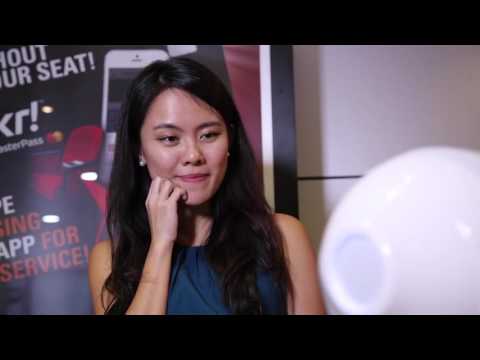
How a Robot’s Gender Representation Might Affect Your Dinner Choices – Recent Findings Indicate Its Significance
When a robot suggests a dish at your neighborhood restaurant, remember: its artificial demeanor could be influencing your choices beyond mere assistance. Recent research by Penn State University indicates that the perceived gender of a robot significantly impacts its persuasive power, particularly in relation to the customer’s gender and their level of personal empowerment at that moment.
In an increasingly technologically-oriented hospitality landscape, service robots have evolved from mere novelty to practical tools. From Bear Robotics’ Servi serving dishes at TGI Fridays to SoftBank’s humanoid robot Pepper accepting orders at Pizza Hut, robots are now responsible for tasks that require more than just coordination; they require psychological insight. This is where mindful design, especially in relation to human behavior, becomes essential.
The pressing question for restaurateurs and hotel operators is not whether to utilize robots but rather how these robots can effectively engage patrons—and it seems that gender representation could play a crucial role in this endeavor.
Power, Gender, and Robot Influence: Insights from the Research
In a peer-reviewed article published in the Journal of Hospitality and Tourism Management, researchers Lavi Peng, Anna Mattila, and Amit Sharma from Penn State revealed an intriguing result: customers—especially women—are generally more influenced by service robots with male traits, but this is contingent on specific psychological circumstances.
The researchers discovered that women who felt a lack of power during their interaction (such as during instances of standardized or hurried service) were more inclined to accept suggestions from a robot that exhibited masculine traits. Conversely, men who experienced a similar lack of power in the same context did not show notable variations in their responses to the robot’s gender.
This “three-way interaction” between the robot’s gender presentation, the customer’s gender, and the customer’s sense of power highlights enduring societal connections linking masculinity with authority and competence.
“Our findings indicate that women with diminished power were more likely to accept the recommendations of a male robot,” Peng noted. “In contrast, for men experiencing low power, we found the difference to be less pronounced.”
Nonetheless, these influences disappeared when customers—irrespective of gender—approached the interaction feeling confident or empowered. Those with a sense of empowerment showed minimal concern for the robot’s gender presentation and were more inclined to trust their own judgments.
Practical Design Considerations for Restaurants and Hotels
What implications does this research hold for practical applications? For the hospitality sector, focused on enhancing efficiency and profitability while ensuring a welcoming atmosphere, the findings provide a clear guideline.
– In fast-casual or quick-service restaurants, where patrons usually have little control over the menu or dining experience, robots designed with masculine traits may be more effective in promoting specials and encouraging upsells, particularly with female customers.
– In fine-dining venues or concierge environments, where guests often feel empowered and confident in their choices, the robot’s gender representation may be less impactful. In these cases, emphasizing the robot’s expertise or traits like approachability and attentiveness could be a more effective design approach.
– Establishments wary of reinforcing conventional gender stereotypes should proceed with caution. This is where the notion of “cuteness” enters the dialogue.
The Cuteness Factor: A Strategy for Reducing Gender Bias in Robots
Unsurprisingly, the concept of constructing robots to mimic traditional gender roles raises ethical issues, particularly if it risks perpetuating stereotypes. To explore methods for neutralizing these dynamics, the Penn State research team undertook a follow-up study with 156 university students. This time, they investigated whether “cute” robot attributes—such as large eyes, rounded faces, and softer tones—could mitigate unconscious gender biases.
The findings were promising. Across the board, both male and female participants reacted similarly to the cute robot iterations, largely ignoring the robot’s gender-associated design.
“Both male and female customers had comparable reactions to both male and female robot designs,” Peng stated. “For businesses looking to reduce gender stereotypes, adopting a cute design for their robots could be a viable strategy.”
This effect, formally termed the “baby schema” phenomenon, is rooted in human evolutionary responses to features resembling infants. It has been demonstrated to evoke warmth, positive emotions, and approachability across different cultures—qualities that, in this scenario, may override pre-established notions of masculinity or femininity.
Key Takeaways for Businesses: What Actions Should Be Taken?
For leaders in hospitality and retail, the study’s implications are both actionable and clear:
– Consider masculine robot designs in scenarios where persuasion is crucial, such as promoting premium products or daily specials—particularly in settings where customers may feel less in command.
– Empowered clients prioritize less on gender cues. In luxury dining or hotel concierge contexts, stress professionalism and efficiency rather than gendered aesthetics.
– To decrease the likelihood of reinforcing stereotypes, look into integrating “cuteness” in robot design as a mitigating factor. Envision WALL-E instead of RoboCop.
– Regularly evaluate your service context: standardized settings may elevate…